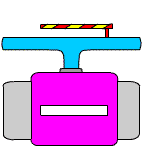The E-ZPass Road Toll System
Created | Updated Jan 10, 2012

In Neal Stephenson's novel Snow Crash, a courier passes through any number of automatic tolls and gateways without a hitch as cameras read barcode IDs displayed prominently for the purpose on her chest.
A more primitive version of the same system was installed in 1998 on freeways in and around New York City, and was quickly copied throughout the eastern seaboard of the United States.
How Does It Work?
A pod-like radio tag, thin and roughly four inches square, is mounted on your car's windshield in front of the rear view mirror. When approaching a toll booth, you simply slow down to 30 miles (50 kilometres) per hour. The toll station scans your tag, bills you the appropriate fee, and lifts the mechanised gate, allowing passage without stopping.
How Doesn't It Work?
There are a few flaws in the E-ZPass system. For example, often drivers without a radio tag will park themselves in an E-ZPass-only toll lane, and sit around honking their horn waiting for an attendant. This inevitably provokes finger-waving, honking and a minor traffic jam, which is only remedied when an attendant makes his way across the toll islands to the stranded dolt and takes his money by hand.
This Researcher once saw someone barrel straight through the wooden toll arm at 30 miles per hour, although this is one bug that should probably be filed under 'human error'.
The End Result
E-ZPass has almost completely alleviated toll congestion in New York and New Jersey on properly equipped roads and bridges. The few remaining non-E-ZPass lanes at each tollstop have lines hundreds of metres long, but the vast majority of drivers don't care - they just breeze through unhindered.
The State of New York is considering supplying E-ZPasses free of charge to all newly licensed drivers.

